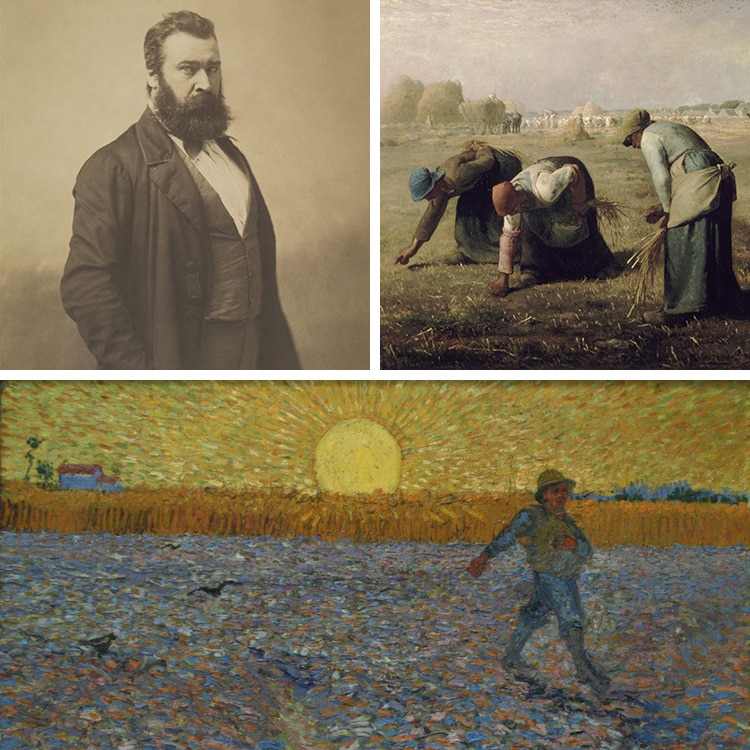
After Romantic artists like Delacroix and J.M.W. Turner dazzled the art world with their emotionally-charged paintings, a new, opposing art movement emerged—one that emphasized working-class people and contemporary settings. The Realist style was revolutionary for placing equal importance on everyday subject matter. One of the most notable painters to arise from this 19th-century movement was Jean-François Millet.
Initially trained as a portrait painter, the French artist was one of the founding members of the Barbizon School—a group of Realist artists who lived and worked in Barbizon, France. While most of the members focused on landscapes, Millet stood apart for his interest in portraying people, usually farmers, at work. This appreciation for country life was one of the strongest sources of inspiration for Post-Impressionist Van Gogh, who copied and referred to Millet's paintings repeatedly in his own art.
Here, we will learn more about Millet, and how his interest in depicting country life influenced the art of Van Gogh.
Who was Jean-François Millet?

Photograph of Jean-François Millet, 1856–1858 (Photo: Nadar via Wikimedia Commons, Public domain)
Full Name | Jean-François Millet |
Born | October 4, 1814 (Gruchy, France) |
Died | January 20, 1875 (Barbizon, France) |
Notable Artwork | The Gleaners |
Movement | Realism |
French artist Jean-François Millet (1814–1875) was a prominent painter during the 19th-century Realist movement and one of the founders of the Barbizon school, which rejected the ideals of Romanticism.
Born into a farming family in northern France, Millet was initially trained as a portrait painter. After moving to Paris, he was introduced to other artists interested in depicting peasant and rural subjects. He received poor feedback from the Paris Salon and later moved to Barbizon, a rural French town, with his family. There, he embraced the country subjects which interested him in increasingly ambitious works of art.

Jean-François Millet, “Going to Work,” 1851–3 (Photo: Cincinnati Art Museum via Wikimedia Commons, Public domain)
The Barbizon School
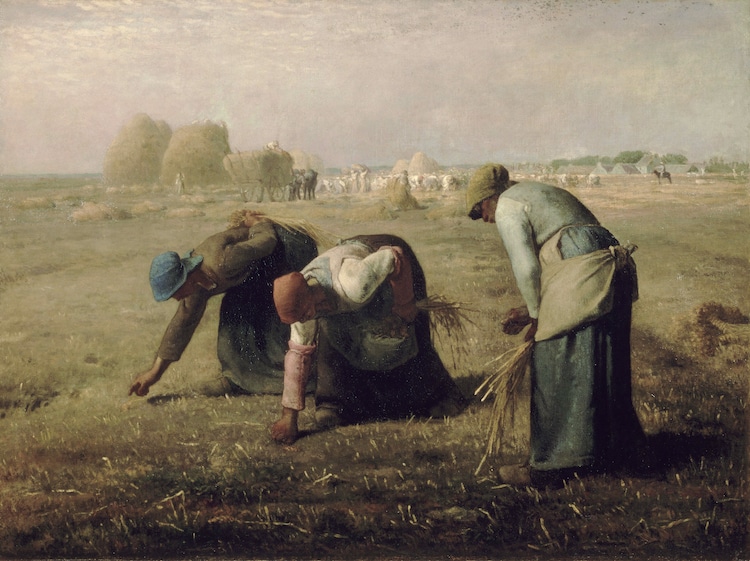
Jean-François Millet, “The Gleaners,” 1857 (Photo: Musée d'Orsay via Wikimedia Commons, Public domain)
The Barbizon School was a facet of the Realist art movement which rejected the Romantic style and embraced “real subjects.” While most of the participants were interested in depicting landscapes based on the surrounding area of the forest of Fontainebleau, some—like Millet—also focused on the people who worked in these environments, primarily farmers.
The inspiration for this departure is usually ascribed to the art of English painter John Constable, whose idyllic paintings made natural scenes more than just a backdrop. After the Revolutions of 1848, Millet and other artists moved to Barbizon to dedicate their practice to continuing the ideas portrayed in Constable's work. Other artists who relocated to Barbizon include Théodore Rousseau, Paul Huet, Constant Troyon, and Charles-François Daubigny.
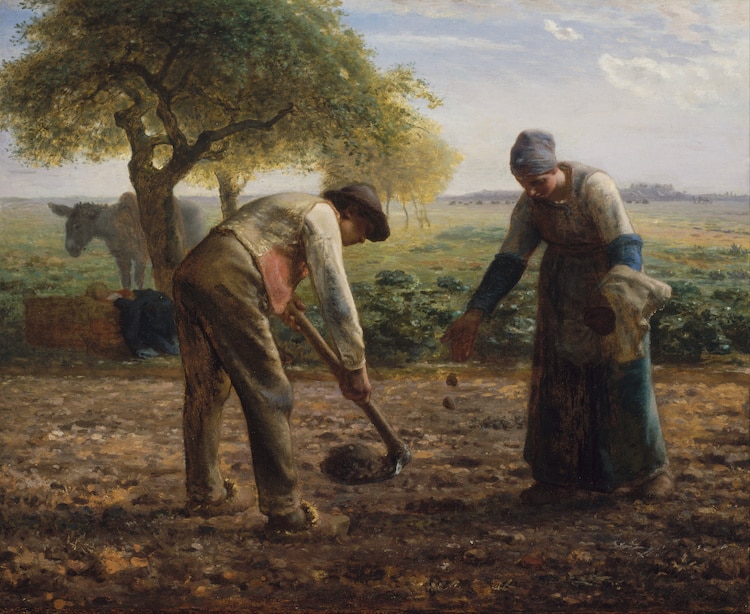
Jean-François Millet, “Potato Planters,” c. 1861 (Photo: Museum of Fine Arts via Wikimedia Commons, Public domain)
While many of his contemporaries pursued landscape painting, Millet gravitated toward rural workers. “Peasant subjects suit my nature best,” Millet said, “for I must confess . . . that the human side is what touches me most in art.”
Influence on Van Gogh
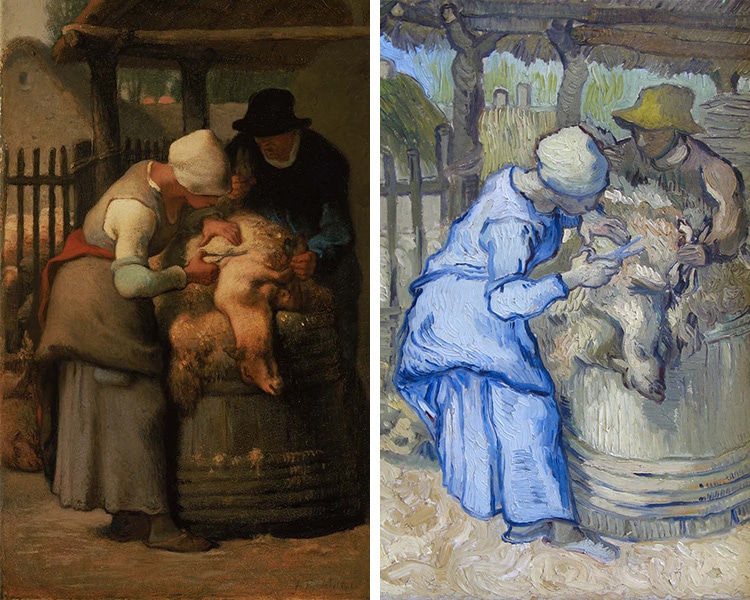
Left: Jean-François Millet, “Shearing Sheep,” 1852–3 (Photo: Museum of Fine Arts via Wikimedia Commons, Public domain)
Right: Vincent van Gogh, “The Sheep-Shearer (after Millet),” 1889 (Photo: Van Gogh Museum via Wikimedia Commons, Public domain)
While Millet was a pioneering Realist painter in his own right, he became even more renowned through his influence on Dutch artist Vincent van Gogh (1853–1890). The Post-Impressionist painter—who was active more than a decade after Millet's death—made numerous references in letters, drawings, and paintings to Millet's oeuvre, finding creative inspiration in his depictions of working-class people.
Van Gogh felt a strong connection to farmers and laborers, who he believed lived noble lives, working with the land.
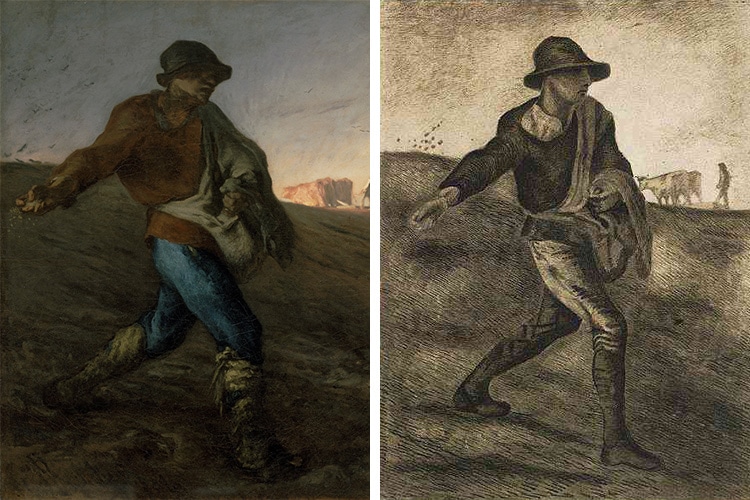
Left: Jean-François Millet, “The Sower,” 1850 (Photo: Museum of Fine Arts via Wikimedia Commons, Public domain)
Right: Vincent van Gogh, “The Sower (after Millet,” 1881 (Photo: Van Gogh Museum via Wikimedia Commons, Public domain)
One of the motifs that frequently reappears in Van Gogh's art is a depiction of a man sowing a field. Based on Millet's painting The Sower from 1850, Van Gogh made over 30 works inspired by this figure during his lifetime. To Van Gogh—who found spiritual meaning in the environment—this image conveyed the dignity of cultivating the land.
While Van Gogh often copied this portrait directly as a source of comfort, he also included it in paintings, like two from 1888; one merged his admiration for Millet with his love of Japanese prints—two hallmarks of his style.
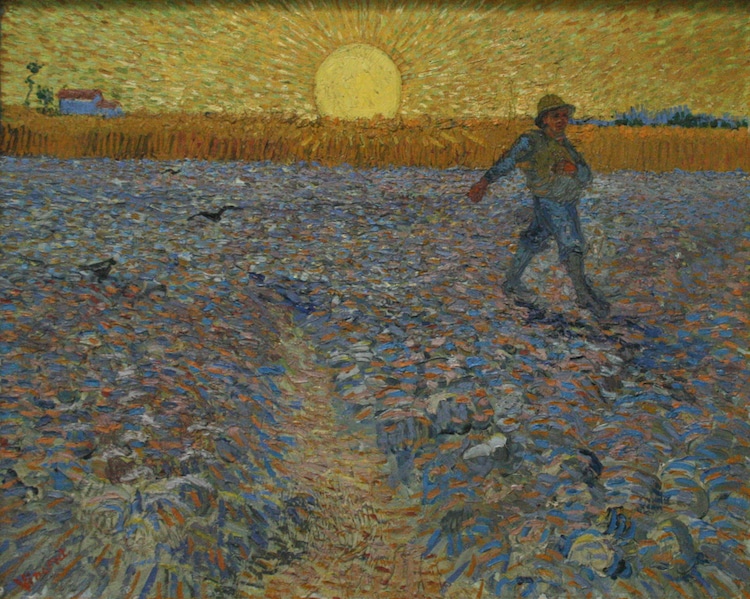
Vincent van Gogh, “The Sower I,” 1888 (Photo: Kröller-Müller Museum via Wikimedia Commons, Public domain)

Vincent van Gogh, “The Sower,” 1888 (Photo: Van Gogh Museum via Wikimedia Commons, Public domain)
Related Articles:
Here’s Where 20 of Art History’s Most Famous Masterpieces Are Located Right Now
10 Important Impressionist Painters Who Shaped the Iconic Movement
How Gustave Courbet Shocked the Art World With His Realistic Depictions of Everyday People
The Captivating History and Enduring Influence of Italian Renaissance Art






















































































